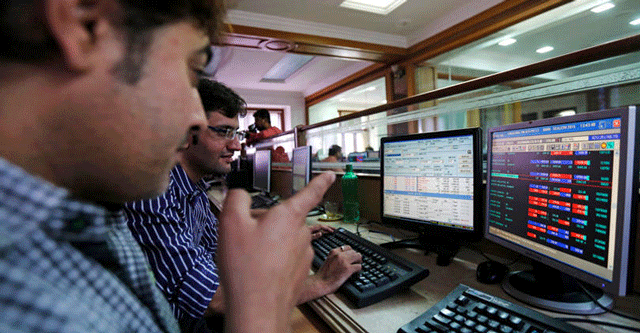
Algo trading sans regulation can hit fortunes of human traders, reveals IIT-Madras research


The use of algorithms and application programming interfaces, or APIs, to automate trading in stock markets in India can put human traders at a disadvantage, reveals a recent research study conducted by the Indian Institute of Technology, Madras (IIT-M).
Algorithmic trading, or algo trading as it is better known, refers to the use of advanced software programs to automate market trades at exceedingly high speeds that conventional human-executed trades simply cannot match. According to Equedia Investment Research, algo traders make trades in 10 milliseconds or less. For comparison, it takes 300-400 milliseconds for you to blink your eye.
The research, published in the peer-reviewed journal Applied Economics, classifies algorithmic traders (ATs) into two buckets -- proprietary algorithmic traders (PATs), or those who trade in the market for themselves; and buy-side algorithmic traders (BATs), or brokers who trade on behalf of clients. According to P. Krishna Prasanna, professor at the department of management studies (DoMS) at IIT-M, the use of algorithms in trading by PATs and BATs causes a simulated price disparity which, in turn, robs the market of its natural liquidity.

“Typically, algorithmic traders enter orders and subsequently cancel them very quickly. Now, looking at the placed orders, the price of a stock moves, based on which human traders would also place their orders. But the algo traders have already cancelled their own orders. This happens within minutes. Our major finding saw how this activity from PATs drains out market liquidity,” Prasanna explained in an interaction.
In the stock market, liquidity refers to the efficiency at which an equity can be bought and subsequently sold, without drastically affecting its market price.
“When BATs put a lot of orders, this essentially simulates liquidity in the market, when it is not there. PATs and BATs often play hide and seek in the market, because in India, some institutions do both forms of trading. In such a situation, orders placed by BATs crowd out those placed by PATs,” Prasanna added.

This, the IIT-M study has found, can put the individual, human trader at a disadvantage of losing out to more efficient technologies such as the automation algorithms in stock market trading.
To regulate the use of such technologies in the market, India’s market regulatory body, the Securities and Exchange Board of India (Sebi) floated a consultation paper and draft regulatory framework on December 9, 2021. The objective of this paper is to establish tighter control on algorithmic trades, which experts say could boost high value retail investors in the long term.
According to the paper, the features of algo trading include using a defined set of instructions in the form of algos to generate trading signals and placing orders. The system automatically monitors live stock prices and initiates an order when the given criteria are met. The paper noted that the algos are increasingly being deployed by third-party applications and vendors “without taking requisite approvals” from the exchanges.

“Is it theoretically possible for retail investors entering this segment to get misguided, since the regulation framework is not strong enough? Yes,” said Rahul Jain, president and head of personal wealth at Edelweiss Wealth Management.
Jain added that the aspect of establishing a grievance redressal mechanism in the market towards algorithmic trades could be a crucial aspect for retail investors to come to India. “If a redressal mechanism is put in place, miscreants in the industry will go down, which is important. Regulations will increase the confidence of retail investors who wish to take up algorithmic trading to enhance their trading practices. If that happens, then large retail investments can start flowing into the market,” said Jain.
To be sure, according to a joint study by the National Institute of Financial Management and the Department of Economic Affairs in 2018, around 50 per cent of all trades conducted at the Bombay Stock Exchange (BSE) and the National Stock Exchange (NSE) were algorithmic trades. The number is largely corroborated to be similar even in 2021, according to Kamlesh Shah, alternate president of the Association of National Exchanges Members of India (Anmi). Globally, the same category accounts for nearly 80 per cent of all trades.

Could such regulation, as proposed by Sebi, put algorithmic trades at a disadvantage and push the Indian stock market back? Prasanna says that no stock exchange, in India or elsewhere, would want to peg back algorithmic trading entirely as everyone wants liquidity. However, effective regulations could reduce the feeling among retail investors of not having enough fair opportunity to compete with algorithmic traders in the market.
“Western markets have a clear classification of who are PATs and who are BATs. In India, the same institution does all the activities, since it is not very well classified. A ‘conglomerate’ behaviour is clearly there in India, which is something that will require a certain degree of regulation,” Prasanna added.
Jain believes that once Sebi introduces regulations (the market regulator is inviting comments on the same till January 15) to control the technology-driven market trades, there could be an initial impact. “It can have an impact at the start as it would require firms to go through processes and get approvals. But, if the processes are convenient, then it is certainly scalable. Such regulations would protect market suitability for retail clients, as well as redressal procedures. That can draw a lot of clients into the whole algorithmic trading, in terms of the future,” Jain said.

